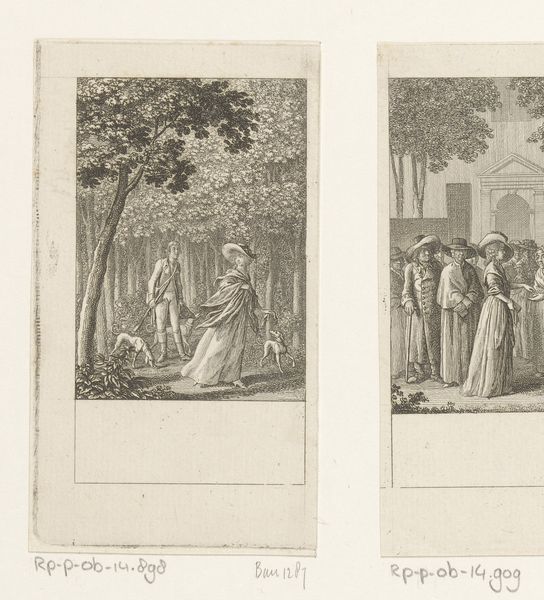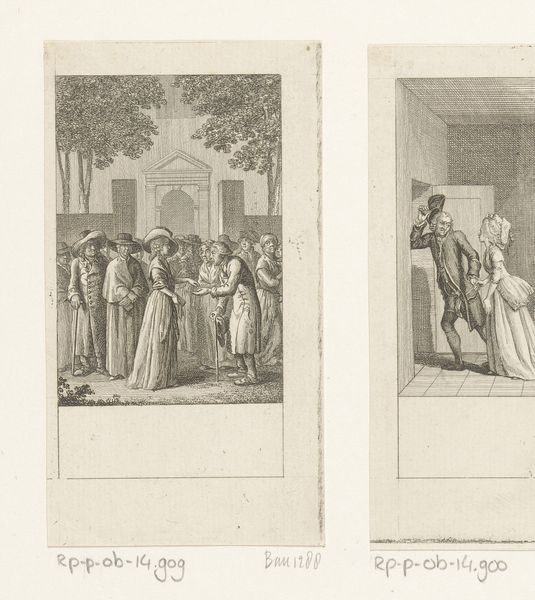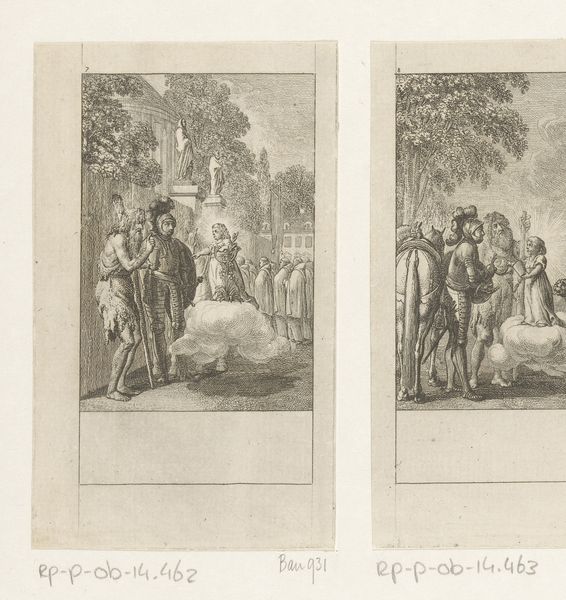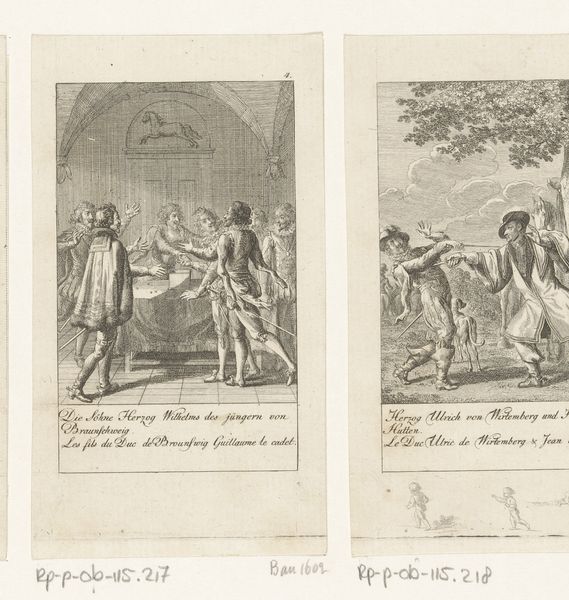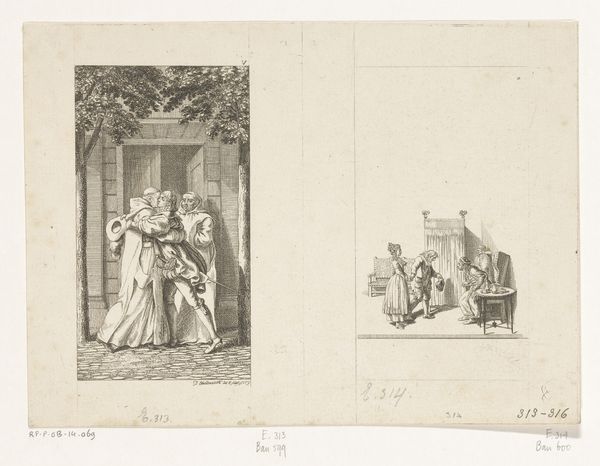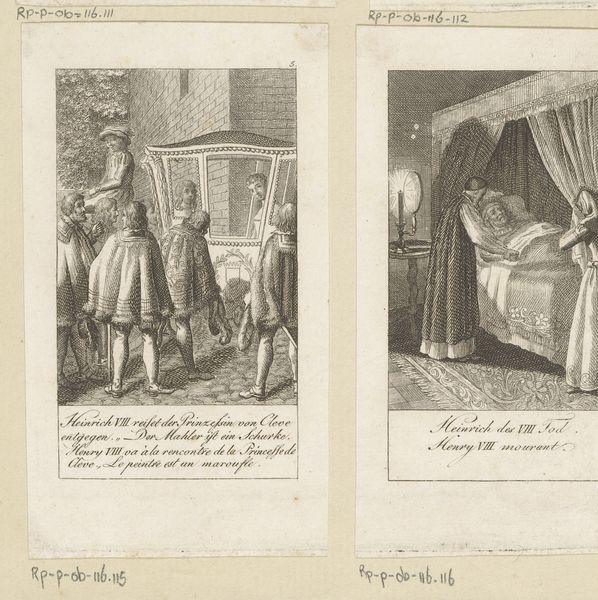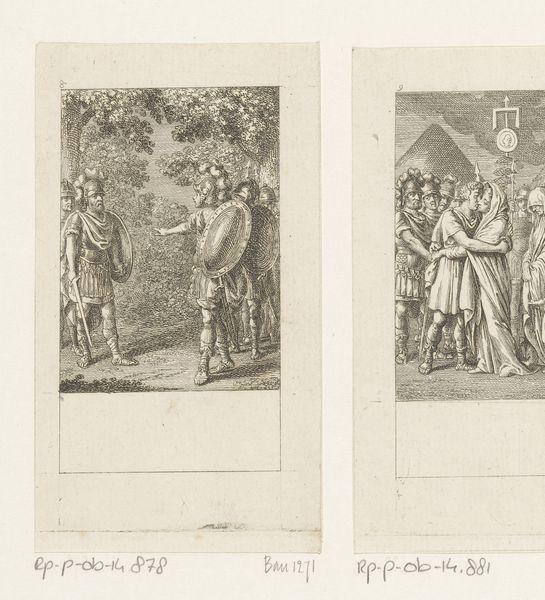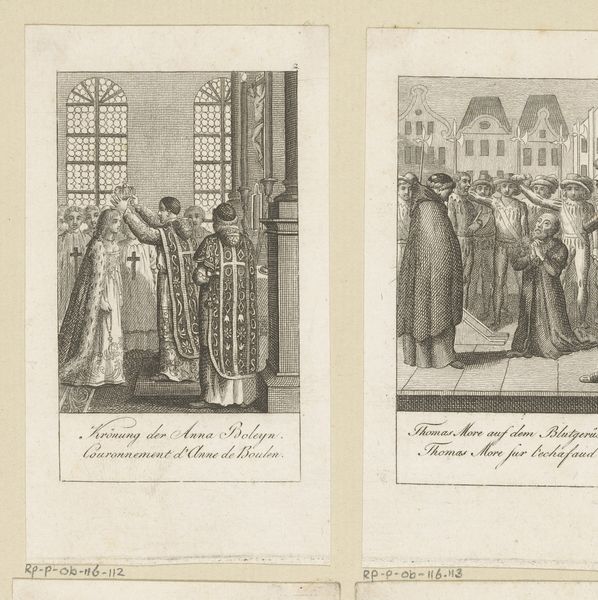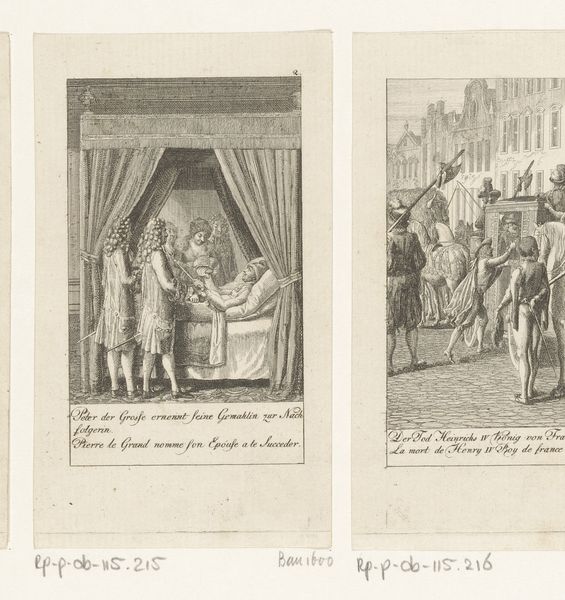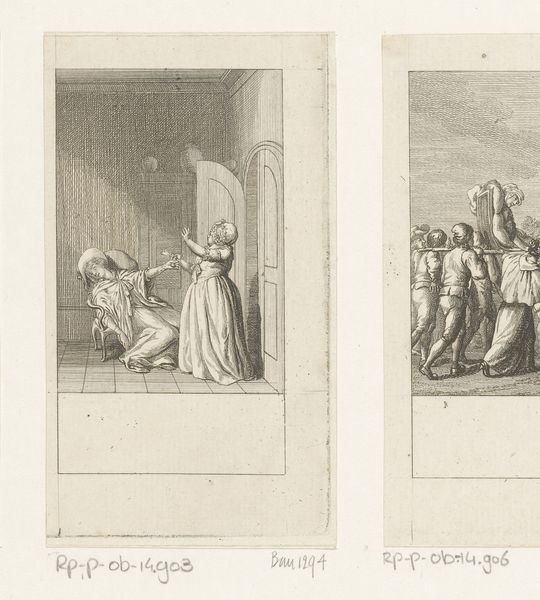
print, engraving
#
neoclacissism
#
narrative-art
# print
#
old engraving style
#
figuration
#
history-painting
#
engraving
Dimensions: height 109 mm, width 62 mm
Copyright: Rijks Museum: Open Domain
Editor: Here we have "Voorstelling uit de geschiedenis van Hendrik VIII" by Christian Gottlieb Geyser, from 1796. It's a print, an engraving actually, and I'm immediately struck by the narrative it's trying to convey through such a rigid medium. It seems so…distant. What do you see in this work? Curator: What strikes me is the conscious act of *reproduction* here. It is not just a historical depiction but a copy, a dissemination of power relations via the printing press. Consider the labor involved: the engraver, the printer, the distributors - each playing a role in making accessible and solidifying a very specific story about Henry VIII and those he condemned. This act of production, of repeated impression, renders history as a consumable object. Editor: A consumable object? How so? Curator: Think about it. Prints like these, multiplied and sold, turned historical narratives into commodities. People bought into, quite literally, the Tudor narrative propagated by the ruling classes. The print becomes a tool in shaping public perception, mediating their understanding of power and justice. The medium becomes the message in a very material way. Are the stories depicted important to this exchange, or does their importance only extend to the material of distribution? Editor: I see… so it's less about the artistic skill and more about the social mechanics of creating and circulating these images? How it frames people’s understanding through repeated viewing? Curator: Precisely. It challenges the traditional notion of the artist as a sole genius and shines a light on the collective effort, the economic and political context within which art is created and consumed. A perfect example of how history can become less the purview of historical record, and instead subject to the mechanics of materialist reproducibility. Editor: That’s a very different perspective than I initially considered, I appreciate how that framework really recontextualizes how prints like this should be examined.
Comments
No comments
Be the first to comment and join the conversation on the ultimate creative platform.
